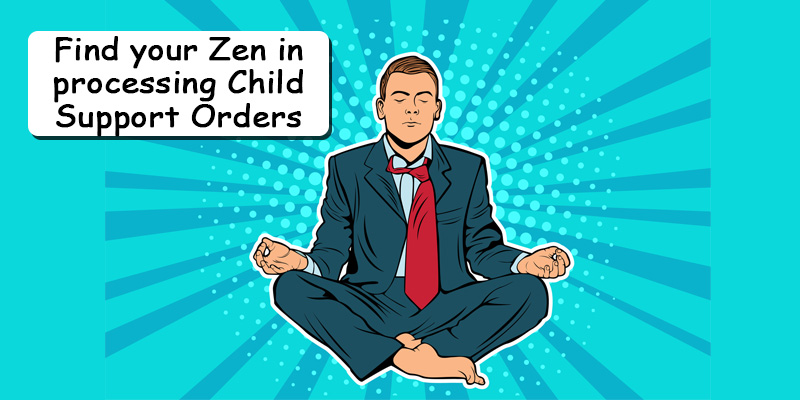Support for Handling Child Support
by Romeo Chicco
Posted on August 29, 2019

With 75% of all child support collected through income withholding by employers, if you have handled payroll for any minimal amount of time, you have most likely needed to comply with a support order. They are long multipage documents with many pitfalls in regards to the proper handling of them. They should not be taken lightly as they are court ordered mandates, and failure to comply properly could mean fines, penalties, liability for the amount of the child support or even U.S. Department of Labor wage and hour violations. Even if the order comes from a court in another state, it can be enforced under the Uniform Interstate Family Support Act (UIFSA).
The first question is when to start withholding. To be safe, I suggest on the first payroll after receiving the order. This will keep in compliance with strict states such as Alaska’s “1st payday after receipt” law and Kansas’ “1st pay period after 14 days from receipt.” The latter may not be a lot of time from the time the order is received, so this article may provide you with the key points and resources for a quick setup.
How much to withhold can be a topic in itself, so here is a very brief summary:
The order may provide a flat amount, but the amount to withhold is going to be limited by the Consumer Credit Protection Act (CCPA). The amount of funds from which the support can be deducted is called Disposable Earnings, which is the employee’s Gross Pay less any Mandatory Deductions. The latter includes federal, state, and local income tax, Social Security (OASDI), Medicare tax, and any other taxes as determined by state law. Once the Disposable Earnings is determined, then the support deduction cannot be greater than the federal CCPA limits.
- 55% of Disposable Earnings: Employee supports another spouse or child, and payments are more than 12 weeks late
- 50% of Disposable Earnings: Employee supports another spouse or child
- 60% of Disposable Earnings: Employee does not support another spouse or child
- 65% of Disposable Earnings: Employee does not support another spouse or child, and payments are more than 12 weeks late
Some states have lower limits, so refer to the state table document linked below.
Once funds are withheld, I suggest to remit the funds to the State Disbursement Unit on the same day the wages are paid to the employee. This will keep in compliance with a state such as Delaware’s “on or before payday” to the more common “7 days after payday” that most states follow.
Once an order is in place, do not stop withholding and remitting until you receive an official order to stop. Never rely on the employee’s word. If the employee separates from employment for any reason, you must notify the support enforcement agency. “Immediately,”“promptly” and “upon termination.” The aforementioned is the language you will find in many state regulations as to how soon to notify the agency, while states such as Wyoming, Nebraska, and Puerto Rico are “30 days after termination.” If you receive multiple orders (child support, garnishment or levy) for the same employee, it is best to reach out to the issuing agencies to determine priority and prorating. Child support typically takes precedence over all other orders unless the employee has a federal tax levy in place.
I have provided many states as examples in notable mentions, but if you are looking for something more comprehensive, the U.S. Department of Health and Human Services Office of Child Support Enforcement is a central place for information about every state. If you want to know the specifics for your state, here is a link to a comprehensive document. The laws get a bit tricky when the order comes from one state and the employer is in another. Follow the laws of the issuing state in regards to duration and amount of child support to withhold and where to send the payments. Follow the laws of the work state (employer state) in regards to when to start withholding, when to send payments, mandatory deductions, limitations to withholding, priority and prorating and administrative fees allowed.
Handling a support order and remitting the funds to the state can be time consuming and even incur costs such as bank fees, payroll service fees and postage. To offset this, most states allow an administrative fee. Guam does not allow any fee while Kentucky is $1 per payment, Alaska is $5 per payment, Pennsylvania has a $50 one-time fee and Ohio is 1% of payment. In practice, I find that most employers absorb any costs and do not charge anything to the employee.
While I make every attempt to ensure the accuracy and reliability of the information provided in this article, the information is provided “as-is” without warranty of any kind. Sunrise HCM or Romeo Chicco does not accept any responsibility or liability for the accuracy, content, completeness, legality, or reliability of the information contained. Consult with your CPA, Attorney, and/or HR Professional as federal, state, and local laws change frequently.